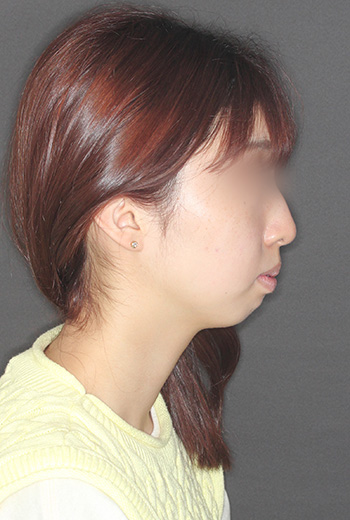
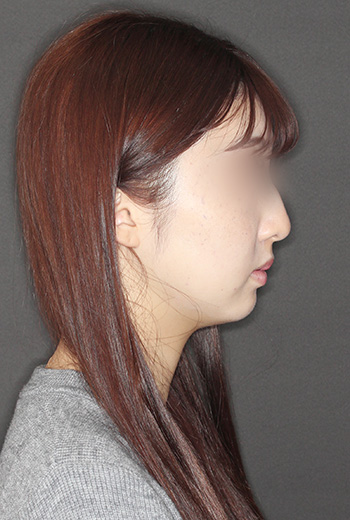
Left is a profile photo before orthodontic treatment, and the right is after orthodontic treatment. Since the lower jaw does not grow in adults, the mechanics of orthodontic treatment change the position of the lower jaw by changing the three-dimensional position of the upper and lower molars. There has been a great improvement from the nose to the chin.
Compare the two pictures above. Before the orthodontic treatment on the left, the muscles around her lips and chin are tense when trying to close her upper and lower lips, and the chin recedes. After the orthodontic treatment on the right, the lips close comfortably and without tension, a beautiful curve is formed from the upper lip to the chin, and the chin is more forward than before the treatment. The length from the chin to the neck has also increased, as if assisted by surgery.
Look at the X-ray of the head below. In normal cases, the length relationship between ① and ② is 3:4, with the length of the lower jaw part of ② being longer, but in this case, the relationship is reversed. Why? This is a technical matter, but I think that this patient suffered severe damage to the TMJ during childhood due to trauma or habits such as teeth grinding, and lost the opportunity for the lower jaw to grow during the growth period (around 10 to 13 years old).
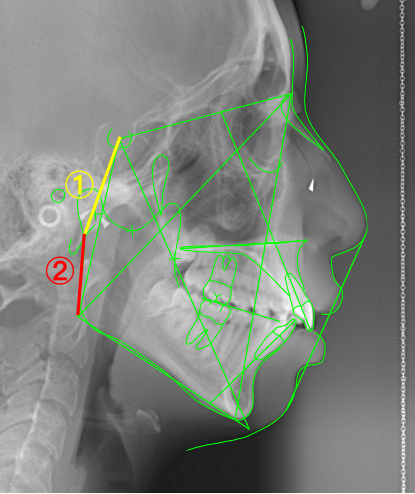
In the previous case (Growth period 1), we showed how the TMJ condition affects the growth of the jaw. In this case, the lower jaw did not grow sufficiently therefore the face was greatly affected.
The initial examination with an MRI showed that the condition of her TMJ disc displacement was in the most advanced stage, with a large forward displacement of the disc, and the disc did not return to its original position even when the mouth was opened. Since the disc displacement had already occurred for a long period of time, it had become chronic and the symptoms were slight, but after stabilizing the jaw position with a splint and adjusting the TMJ condition at the same time, we proceeded to orthodontic treatment.
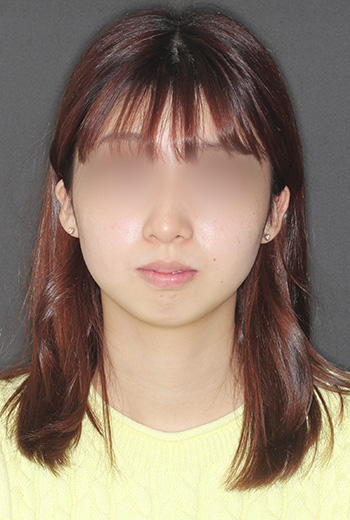
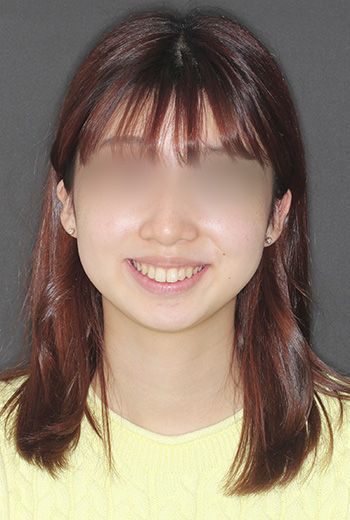


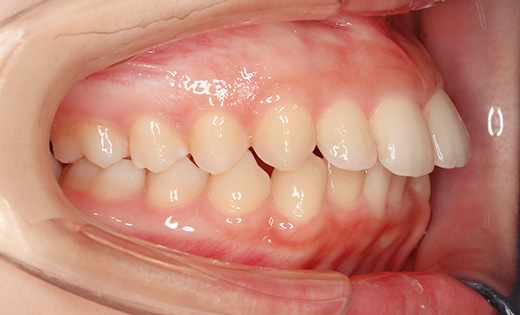
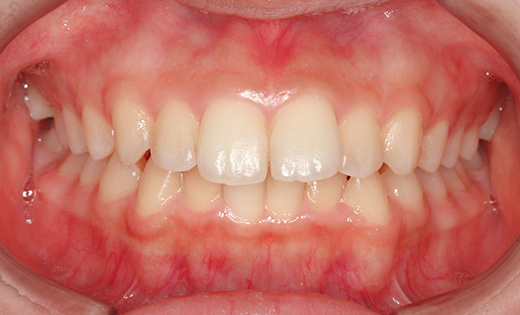
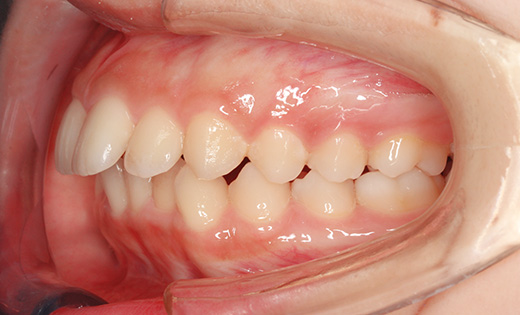
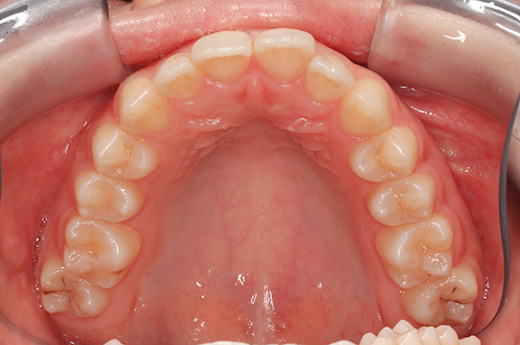
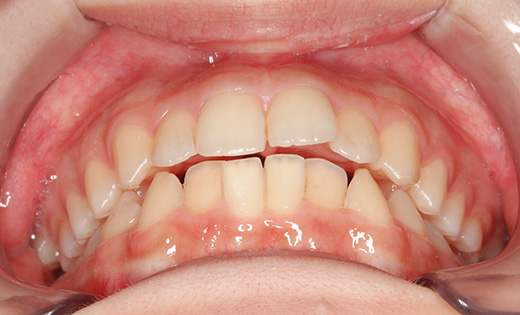
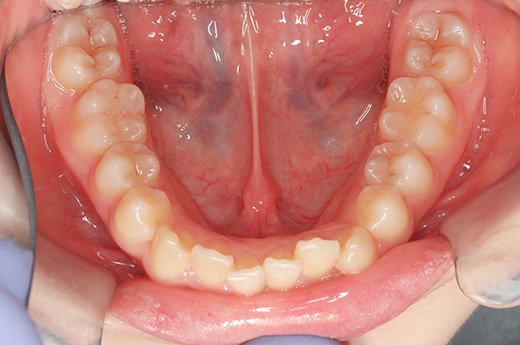
Before orthodontic treatment (age 19 years and 1 month). The patient's main complaints were protruding upper front teeth and receding chin. The initial examination revealed a disc displacement in the TMJ, so splint therapy was performed prior to orthodontic treatment.
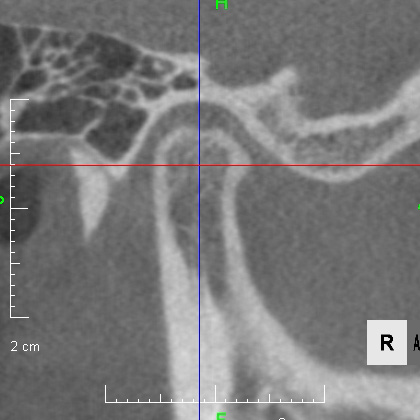
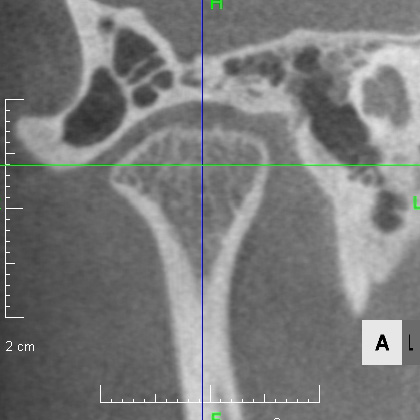
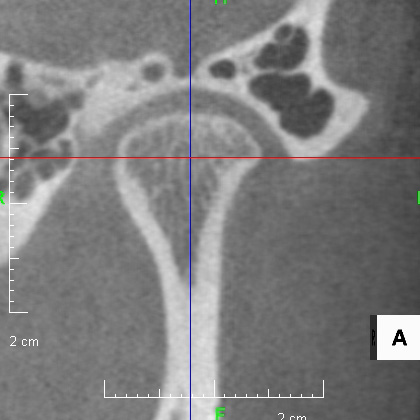

CBCT image of the TMJ before orthodontic treatment. The TMJ disc displacement was in the most advanced stage, with the disc displaced forward when closed and the disc was not restored even when opening. The mandibular condyle and the glenoid fossa were flat and deformed.
This patient was an adult, so there was no growth left. When trying to close the upper and lower lips, the muscles around the mouth and chin were tense, and the chin was also receding. There was also protrusion of the upper front teeth. We extracted the premolars and used the space to control the 3-dimensional position of the molars, rotated the lower jaw counterclockwise, and used mechanics to bring the chin forward. Since the aesthetic elements of the face were in order, we carefully used the mechanics of tooth movement.
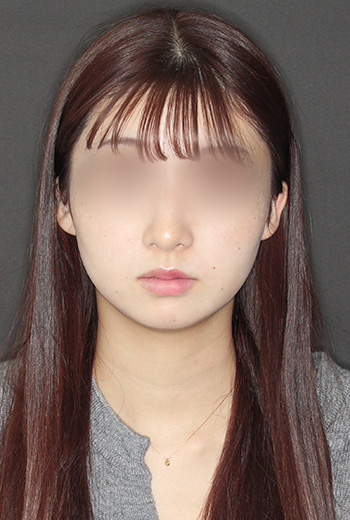
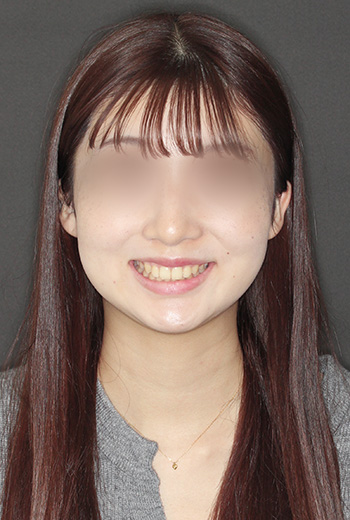


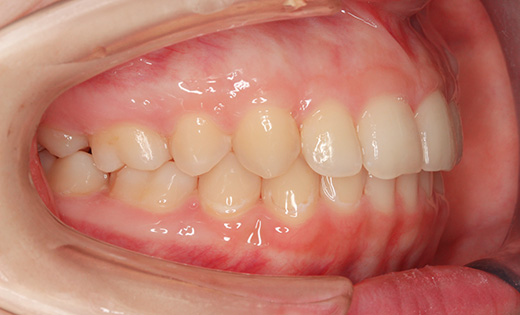
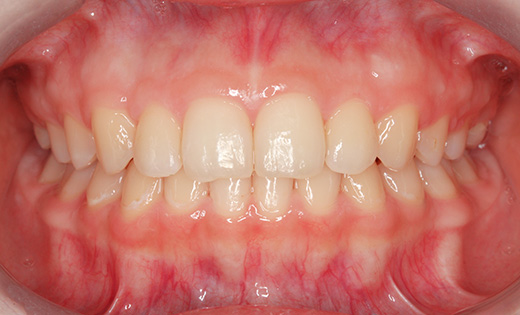
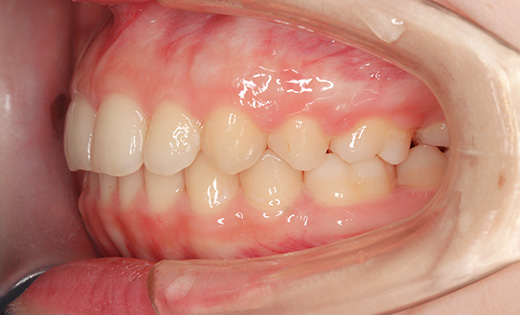
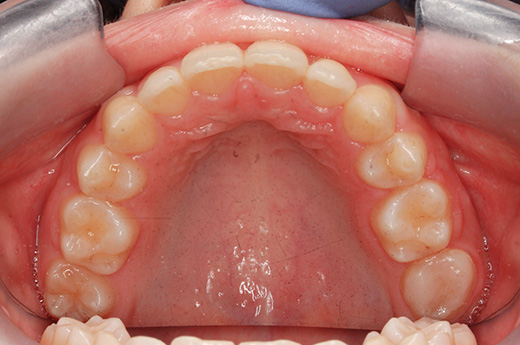

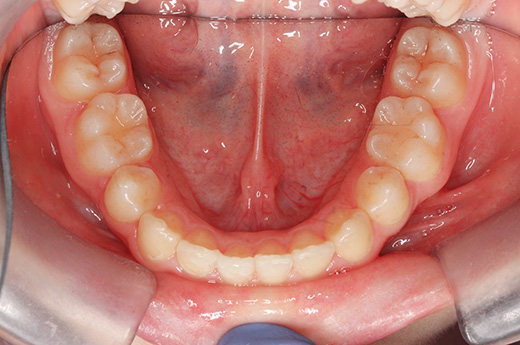
Condition after orthodontic treatment. The patient's main complaints were protruding upper front teeth and receding chin, and both were resolved. With the patient's great cooperation, we were able to achieve our goal.
The premolars were extracted, but in cases like this where the lower jaw was significantly receded, the third molar (wisdom tooth) was present in the upper jaw, so the second molar was also extracted and the wisdom tooth was inserted in its place. The height of the molars was controlled and the lower jaw was rotated counterclockwise. The wisdom teeth on both sides of the upper jaw were guided to the position of the second molar, so the number of teeth was almost the same as if only the premolars were extracted. The lips are closed with ease and no tension, and a beautiful curve is drawn from the upper lip to the chin, and the chin is protruding forward. The length from the chin to the neck has also increased, and it is as if the patient has been assisted by surgery. Although the patient’ eyes are censored, the facial expression has changed so much that it seems like the size of the eyes has also slightly increased.

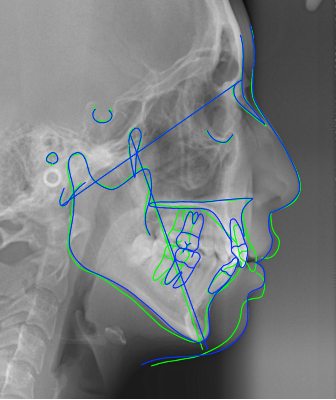
Comparison of standard head X-rays before and after orthodontic treatment. Due to the mechanics of orthodontic treatment, the lower jaw is rotated counterclockwise, the vertical length from the bottom of the nose to the chin is slightly shorter, and the chin is also pushed forward, greatly affecting the facial appearance.
The orthodontic device used was an edgewise appliance (Straight wire appliance SWA), and the upper and lower left and right premolars and the upper and lower left and right second molars were extracted. The treatment period was two years and three months, and the treatment cost was 1,090,000 yen (excluding tax, at that time).
- Generally, the risks of treatment include root resorption, pulp necrosis, caries, gingival recession, TMJ disorder, and worsening periodontal disease, but none of these occurred in this case.
In summary, if we had met the patient earlier in terms of timing of treatment, the treatment possibilities (e.g., controlling the disc displacement and accelerating the growth of the lower jaw) might have been expanded. However, this is a case in which, even though the patient is an adult, through examination and diagnosis, a thorough understanding of the patient's situation, and the accumulation of small possibilities, we were able to achieve a result that realigned the teeth, achieved a functional occlusion, harmonized the left and right TMJ, as well as a beautiful facial appearance.
